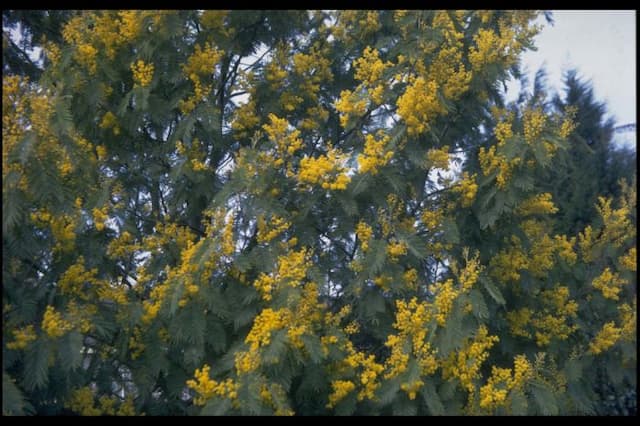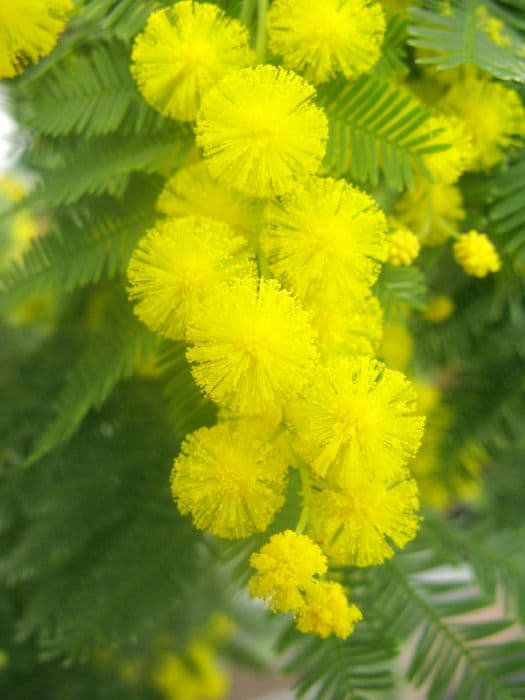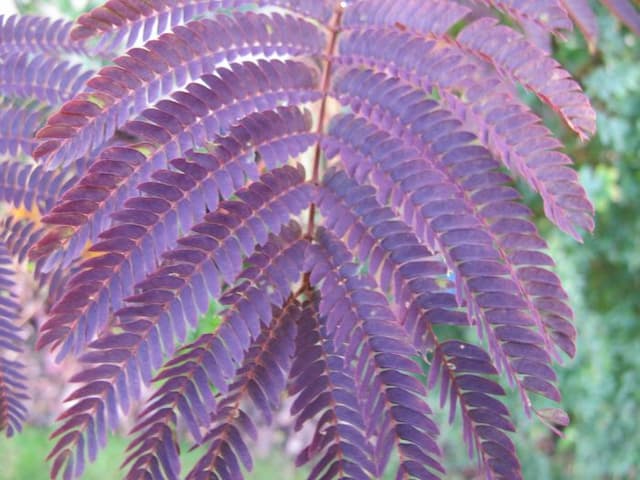Scarlet runner bean Phaseolus coccineus 'Celebration'

ABOUT
The 'Celebration' variety of the runner bean plant is known for its vibrant and colorful appearance. It typically displays striking red flowers that form in clusters and attract a variety of pollinators, such as bees and hummingbirds. The foliage consists of large, heart-shaped leaves that provide a lush green backdrop to the bright flowers. These leaves grow on twining stems, which often wrap around supports or trellises. The plant produces elongated pods that can range in color from green to purple or even be speckled, depending on the maturity of the pods. Inside these pods, the beans are nestled, and they can be eaten fresh or dried, depending on the preference. Overall, the 'Celebration' runner bean is a decorative and functional plant, acclaimed not only for its ornamental value but also for its culinary uses.
About this plant
 Names
NamesFamily
Fabaceae
Synonyms
Scarlet Runner Bean, Runner Bean, Multiflora Bean, Dutch Case Knife Bean
Common names
Phaseolus multiflorus, Phaseolus speciosus.
 Toxicity
ToxicityTo humans
Phaseolus coccineus, commonly known as runner bean, is not typically toxic when consumed by humans in its mature, cooked form. Like many beans, the raw seeds can contain lectins, which can be harmful if ingested in large quantities. The main symptoms of poisoning from consuming raw or improperly cooked beans may include nausea, vomiting, diarrhea, abdominal pain, and in severe cases, can lead to more serious health complications if left untreated. Always ensure that runner beans are thoroughly cooked before consumption to neutralize these lectins.
To pets
The toxicity of runner bean (Phaseolus coccineus) to common household pets like dogs and cats is generally low when the beans are cooked. Similar to humans, the raw seeds contain lectins, which can cause digestive upset if ingested in significant amounts. Symptoms of poisoning in pets may include vomiting, diarrhea, and abdominal discomfort. To avoid any potential issues, it is best to ensure that any beans given to pets are well-cooked and to only feed them such human foods in moderation.
 Characteristics
CharacteristicsLife cycle
Perennials
Foliage type
Deciduous
Color of leaves
Green
Flower color
Red
Height
8-10 feet (2.4-3 meters)
Spread
4-6 feet (1.2-1.8 meters)
Plant type
Climber
Hardiness zones
7
Native area
Central America
Benefits
 General Benefits
General Benefits- Aesthetic Appeal: Phaseolus coccineus 'Celebration', commonly known as the runner bean, adds vibrant scarlet flowers to gardens, enhancing visual interest.
- Edible Pods: The plant produces edible pods that can be consumed raw or cooked, offering a source of nutrients for diets.
- Nitrogen Fixation: As a legume, runner beans contribute to soil fertility by fixing nitrogen, beneficial for future plants grown in the same soil.
- Vertical Gardening: This climber is ideal for vertical gardening, which can save space and make harvesting easier.
- Wildlife Attraction: The flowers attract pollinators such as bees and butterflies, which are essential for the pollination of many plants.
- Culinary Versatility: The beans are a versatile ingredient in many recipes, from salads to stews, allowing for a wide range of culinary uses.
- Fast Growing: Runner beans grow quickly, providing a short time from planting to harvest compared to many other vegetables.
- Easy to Grow: They are relatively easy to cultivate, making them suitable for novice gardeners or those with less gardening experience.
- Cultural Significance: Runner beans have been traditionally cultivated and valued in many cultures, and growing them can connect individuals to these cultural practices.
- Shade Provider: The dense foliage of runner beans can create shade in the garden, which can be beneficial for lower-growing, shade-loving plants.
 Medical Properties
Medical Properties- This plant is not used for medical purposes.
 Air-purifying Qualities
Air-purifying QualitiesThis plant is not specifically known for air purifying qualities.
 Other Uses
Other Uses- As a natural dye: The bright red flowers of the Scarlet Runner Bean can be used to produce a natural dye for textiles and crafts.
- As a support for other plants: The sturdy vines can be used as living trellises for other climbing plants that need support.
- In companion planting: Gardening enthusiasts sometimes plant Scarlet Runner Beans near crops to help attract pollinators or to provide shade for more heat-sensitive plants.
- As an educational tool: The large seeds are ideal for use in educational settings to teach children about plant germination and growth.
- For soil improvement: Being a legume, Scarlet Runner Beans can fix nitrogen into the soil, improving its fertility for future plantings.
- In culinary arts: The ornamental and vibrant flowers can be used as an edible decoration in gourmet dishes.
- As a biofuel: Though not common, the beans could potentially be used to create biofuel given their organic matter content.
- For crafts: Dried seed pods can be used in crafting, such as making rattles or other decorative objects.
- In landscaping: The plant's quick growth and lush foliage make it useful for creating summer green screens or temporary hedges.
- As a natural insecticide: Some gardeners use extracts from the leaves as a mild insect repellent for garden pests.
Interesting Facts
 Feng Shui
Feng ShuiThe Scarlet Runner Bean is not used in Feng Shui practice.
 Zodiac Sign Compitability
Zodiac Sign CompitabilityThe Scarlet Runner Bean is not used in astrology practice.
 Plant Symbolism
Plant Symbolism- Productivity and Abundance: Phaseolus coccineus 'Celebration', commonly known as Scarlet Runner Bean, often symbolizes productivity due to its vigorous growth habit and bountiful harvest of beans.
- Relation and Connection: The plant's tendency to climb and intertwine with structures and other plants can represent the interconnectedness among people and their relationships.
- Passion and Energy: The vivid red flowers of the Scarlet Runner Bean are associated with passion and vibrant energy, echoing the color's traditional symbolism.
- Celebration of Life: Its name 'Celebration' and the plant's showy appearance contribute to its association with joy, festivities, and the celebration of life's events.
 Water
WaterScarlet runner beans require consistent moisture, especially when flowering and developing pods. Water deeply once a week, providing about 1-2 inches of water which is equivalent to 0.5-1.5 gallons, depending on soil type and weather conditions. If the weather is particularly hot or dry, you may need to water more frequently. Avoid overhead watering to minimize disease risk. It's important to keep the soil evenly moist but not waterlogged, as runner beans do not tolerate soggy conditions.
 Light
LightScarlet runner beans thrive in full sun locations where they receive at least 6 to 8 hours of direct sunlight daily. They will perform best when planted in a spot that is sheltered from strong winds but still receives ample sunlight. Avoid overly shady areas, as this can inhibit the growth and productivity of the plant.
 Temperature
TemperatureScarlet runner beans prefer warm temperatures and are sensitive to frost. The ideal growing temperature range is between 60°F and 70°F. They can survive in temperatures as low as 50°F but will stop growing if temperatures exceed 90°F. Planting should occur after the danger of frost has passed to ensure good growth.
 Pruning
PruningPruning the scarlet runner bean is not typically necessary as it encourages growth and pod production. However, pinching off the tips of the vines once they reach the desired length can promote lateral growth and increase yield. The best time to prune is during the active growing season, but be cautious not to over-prune, as this can reduce the number of flowers and pods.
 Cleaning
CleaningAs needed
 Soil
SoilThe best soil mix for Scarlet Runner Bean (Phaseolus coccineus 'Celebration') is a well-draining, fertile loam enriched with organic matter. Aim for a soil pH of 6.0 to 6.8. A mix of two parts garden soil, one part compost or well-rotted manure, and one part sand or perlite is ideal for this vigorous climber.
 Repotting
RepottingScarlet Runner Beans generally do not require repotting as they are annual plants. Plant new seeds each year after the last frost in spring for a season of growth.
 Humidity & Misting
Humidity & MistingScarlet Runner Bean prefers moderate humidity levels, which are typically natural outdoor conditions. They do not require specific humidity controls when grown in their favored environment.
 Suitable locations
Suitable locationsIndoor
Provide full light, stake for support, and maintain room temperature.
Outdoor
Full sun, fertile soil, regular watering, and support for climbing.
Hardiness zone
5-11 USDA
 Life cycle
Life cycleThe life cycle of Phaseolus coccineus 'Celebration', commonly known as the scarlet runner bean, begins with seed germination, which requires warm, well-drained soil and occurs after the last frost when temperatures are favorable. Following germination, the seedling emerges and develops into a vigorous climbing vine, which requires support for optimal growth. The plant then enters the vegetative stage, producing large, heart-shaped leaves and twining stems that can grow several feet. Following the vegetative stage, the plant flowers, producing attractive red or white blossoms that attract pollinators such as bees and hummingbirds. After successful pollination, the flowers develop into elongated, green pods that contain the beans. The pods mature over time, at which point they can be harvested for their edible seeds or left on the vine to dry and then harvested for use as dry beans or for planting in the next growing season.
 Propogation
PropogationPropogation time
Spring-Summer
Phaseolus coccineus 'Celebration', commonly known as the Scarlet Runner Bean, is often propagated by seed. The most popular and straightforward method of propagation is direct seeding into the soil. Ideally, the seeds should be sown outdoors after the last frost when the soil has warmed, typically in late spring or early summer. To encourage germination, the seeds can be soaked in water for a few hours before planting. They should be planted about 1 inch deep (2.54 cm) and spaced approximately 6 inches apart (15.24 cm). In ideal conditions, Scarlet Runner Beans will germinate within 8 to 14 days, and they prefer a sunny location with well-draining soil. Regular watering and support for climbing, such as a trellis, are essential for optimal growth.









